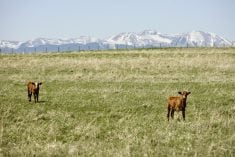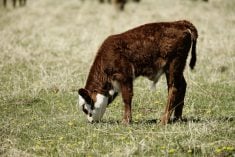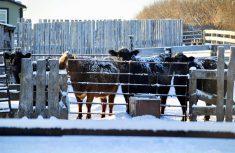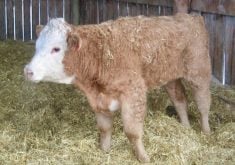A cattle-feeding industry that by year-end will have lost an estimated billion dollars since August 2015 plus a cow-calf sector that has lost more than one million cows and over 20,000 producers in the past decade strongly suggests an industry in crisis.
Cattle feeders might be excused if they are not quite as optimistic about the state of affairs in the industry as some industry spokespersons appear to be. According to data from Canfax cattle-feeding losses since August of 2015 have been extremely large and painful, averaging about $18 per cwt (live wt. basis). On the one million steers and heifers marketed in the last five months of 2015 and weighing an average of 1,450 lbs. this works out to a loss of $260 million last year. Continuing losses in 2016 up to October averaged about $21 per cwt and were expected to continue at that rate to year-end, adding another $760 million in the red. So by year-end the cattle-feeding industry will have absorbed a total loss of roughly one billion dollars — a huge destruction of capital for this industry.
Broadly speaking the losses in 2015 may be attributed mainly to the record prices paid for feeder cattle, and, to be fair, much of this total loss was largely preordained the day the cattle were placed on feed. The losses in 2016 were compounded by sustained declines in the market price of fed cattle approximately $50 per cwt when you average it from the short-lived peak of $200 per cwt in May and June of 2015 to October 2016 of $132 per cwt.
This sheds some light on the collective decision by cow-calf producers not to expand their herds just yet. The July 1 beef cow inventory increased less than 0.5 per cent, by a mere 12,000 head, over the year previous. Since Statistics Canada often revises its numbers this increase must be regarded as negligible.
Read Also
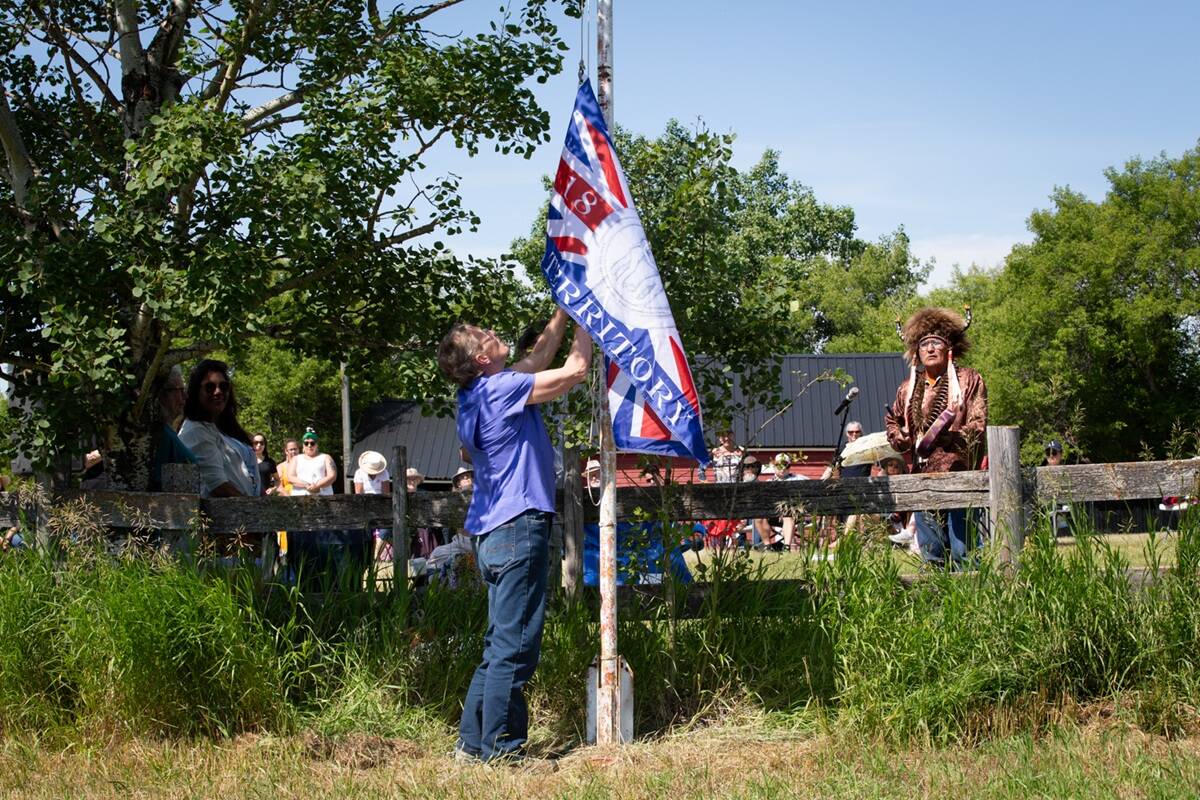
Treaty Land Sharing Network expands reach in Saskatchewan and Alberta
The Treaty Land Sharing Network, which connects land holders with First Nations and Metis people, has expanded since it began in 2018
The decline in the national beef cow herd has primarily been the result of a mass exodus of producers while those remaining held their herds nearly static. This exodus is worrisome.
It primarily began in the fall of 2011, and continued in 2012, when the price of steer calves in the fourth quarter climbed to $156 per cwt, a price not seen since the previous record year in 2000. After a decade of low prices producers apparently decided that they were better off selling a high proportion of their heifers instead of expanding their herds. Prices were, after all the best they had seen in a decade.
But 2011 and 2012 were merely prologues of what was to come. In 2013 a new record fourth-quarter average price of $163 per cwt reinforced the view that they were better off again to cash in on heifer sales and once again any latent plans to expand the herd were put on hold.
Then along came 2014 and the average price of steer calves shot up to $282 per cwt and the previous record was utterly smashed by $120 per cwt on weaned calves, or something like $600 per head. Two related thoughts must have entered the minds of many cow-calf producers at that time. One, such prices could not possibly last, followed quickly by the related thought that one might as well cash in while they lasted.
Even as cattle-feeding losses began to pile up replacement prices remained very strong throughout 2015, due primarily to tight supplies that were made tighter still by continuing export demand from U.S. cattle feeders.
So, despite four successive years of strong and rising replacement prices the beef cow herd continued to shrink and the best that can be said is that numbers appear now to have stabilized.
In 2016 feeder calf prices have more or less been in a steady and sometimes rapid decline, retreating nearly $100 per cwt and just beginning to approach a break-even price for the cattle feeder.
It is difficult to imagine how cow-calf producers will be persuaded to expand their herds under conditions of rapidly falling prices when rapidly rising prices over the past three years failed to elicit any response.
So a closer look at cow herd statistics is in order.
Between 2006 and 2016 the beef cow herd declined by 27 per cent and, since the average herd size increased only slightly from 61 to 63 head, it is certain that the number of beef cow herds has declined at least 30 per cent from 83,000 to about 62,000 in 2016. That’s a loss of 21,000 herds. This rather huge exodus of entire beef cow herds from the industry has received surprisingly little comment despite the irrefutable fact that the commercial beef cow herd is the essential foundation of the entire industry.
Thus, if the industry is not doomed to become a permanently shrunken industry there needs to be some serious thought given to measures that might stimulate herd expansion or, at the very least, quell the current long-term decline.
Since most herds are sized to the carrying capacity of the farm or ranch on which they are located the exodus of producers is more troubling than the decline in cow numbers. Until the land owned by exiting producers is bought or rented by a new or expanding producer that production base is lost to the indusry. So it comes to this: if a way can’t be found to use the land withdrawn from cow-calf production the national herd cannot expand significantly.
A smaller production base also means we cannot fully exploit the increased market access for Canadian beef that has recently been achieved with so much effort. To fully enjoy the benefits of the “Canadian beef advantage” we require adequate supplies to meet the growing export demand for our product. The reality, however, is that no increase in salable beef supplies can be expected before 2020.
Is there a way back?
One factor frequently mentioned to explain this herd attrition is the steadily advancing age of cow-calf producers. This is caused, obviously, by the entry of insufficient younger producers to stabilize and even reduce the average age. This creates some unique problems for the industry, and possibly some real opportunities.
On the downside the advancing age of producers means fewer may be inclined to do all the things necessary to optimize the output of their cow herd and new industry initiatives such as “sustainable beef” and “verified beef production” that require more intensive management and documentation of the practices involved. These procedures that range all the way from prudent sire selection to procedures involving vaccinations, implanting (or the lack of), pregnancy testing and health surveillance generally involve more intensive individual animal management.
The necessity of these tasks undoubtedly figures into the decision of some to exit the industry. Undoubtedly there have been other provocations, as well; the cost and inconvenience of national ID, for example, which to date has failed to deliver the promised direct benefits associated with information. I do not question the necessity of a national identification program. The failure has been in using it to deliver tangible benefits back to the producers who bear the cost of the program.
In the last decade we have lost at least 20,000 producers, which severely restricts the future potential of the industry. While diminished in number these aging cow-calf producers do own grazing lands and still maintain the necessary fencing and provide the basics necessary to maintain our current commercial cow herd. However, they may be less inclined to carry out the more intensive practices mentioned above.
Earlier I noted that the industry has just come through a period where cow-calf returns were exceptionally high and feedlot returns disastrously low. The industry has been through cycles before where one sector enjoyed success while the other languished. Is this the only way a modern industry can function?
I believe we have reached a point where feedlot operators could consider a more proactive role, offering a mutually beneficial agreement with some of these cow-calf operations. This could range from some advice on breeding or animal health practices, and maybe even some assistance, in exchange for an informal or formal undertaking that the feedlot would purchase the weaned calves.
This could be a mutually beneficial arrangement. It would allow the aging herd owner to remain fully current on all of the procedures now recommended, and hopefully allow him or her to continue in the business for a few more years. Ideally, it might excite some interest as well in the next generation to continue in this vein while maintaining ownership of an appreciating land base. For the feedlot operator the advantage of a reliable supply of cattle bred and backgrounded to his needs are obvious. They could also share the savings in marketing and transportation costs.
Ideas like this would surely need some fleshing out but it strikes me some sort of co-operation will be needed if we are to halt this continual erosion of the industry.
Two obvious hurdles are the likely reluctance of cow-calf producers to share their decision-making autonomy with anyone and the fact feedlot operators may not have much interest in the output of small herds.
The first difficulty might be addressed by some sort of contractual arrangement where the cattle would be placed on feed at an agreed break-even price for the weaned calf that specifies the sharing of profits and losses. The second will take more ingenuity. The average western herd has 70 cows (50 in the East) producing an average 30 steers a year and, in a static herd, about 18 heifers, and yet the majority of cows is in smaller herds.
Another problem with this approach is that at various times either the cow-calf producer or the feedlot operator would be reluctant to commit to a contractual agreement when, in the case of the cow-calf operator, weaned calf prices were very high or, in the case of feedlot operators, very low.
Still it should be apparent that the ultimate returns to the entire sector are expressed as the final market price and, to date at least, one sector benefits at the expense of the other, as has been so very recently demonstrated. The question is whether the industry can find a way to work around these boom-and-bust cycles by establishing a closer working relationship and information exchange between the cow-calf and feedlot sectors.
Such arrangements have been made very successfully within the pork industry but neither of the problems noted above are apparent in that sector where contract pricing is well established and herd size is not remotely a problem where a small breeding herd of 100 sows will produce over 2,000 weaned pigs per year.
It is not my purpose, or within my competence, to outline how these arrangements might be made. What I am sure of is that the status quo hasn’t worked out very well over the last few decades and a continued decline in the number of cow-calf producers, if not somehow reversed, will continue to blight the prospects of the entire industry.





